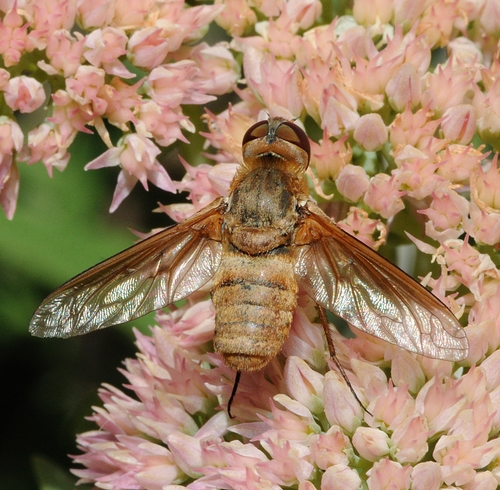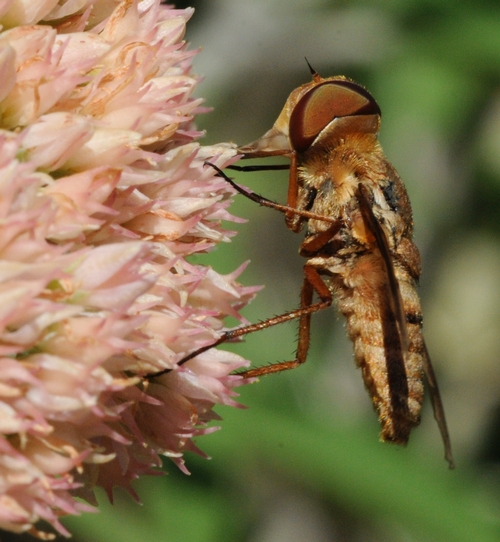- Author: Kathy Keatley Garvey
Will all the pollinators please stand up!
Or do a fly-by like the Blue Angels or a crawl-by like babies competing in a diaper derby.
Bees--there are more than 4000 of them in North America--are the main pollinators, but don't overlook butterflies, beetles, birds, bats and moths.
And flies.
Flies?
Yes, flies.
Here's proof positive that flies can pollinate. If you look closely at this little bee fly on a Mexican sunflower (Tithonia), you'll see that it has just grabbed some pollen. It's a member of the genus, Villa, and family, Bombyliidae, according to fly expert Martin Hauser of the California Department of Food and Agriculture.
Many folks mistake flies for bees. Look through any stock photo catalog or macro insect images on Flickr or a Facebook page and you'll often see hover flies, bee flies and other flies identified as bees.
Three of the easiest ways to differentiate a fly from a bee:
- A fly has one set of wings. A bee has two sets.
- A fly has short, stubby antennae. A honey bee doesn't.
- A fly has no corbicula or pollen basket. A honey bee (worker bee) does.
Welcome to the Pollination Nation!
For more information on bee flies, see BugGuide.net. For syrphids, aka flower flies or hover flies, read the UC Statewide Integrated Pest Management's information on managing pests or read entomologist Robert Bugg's free downloadable PDF on the UC ANR website, Flower Flies (Syrphidae) and Other Biological Control Agents for Aphids (Publication No. 8285).
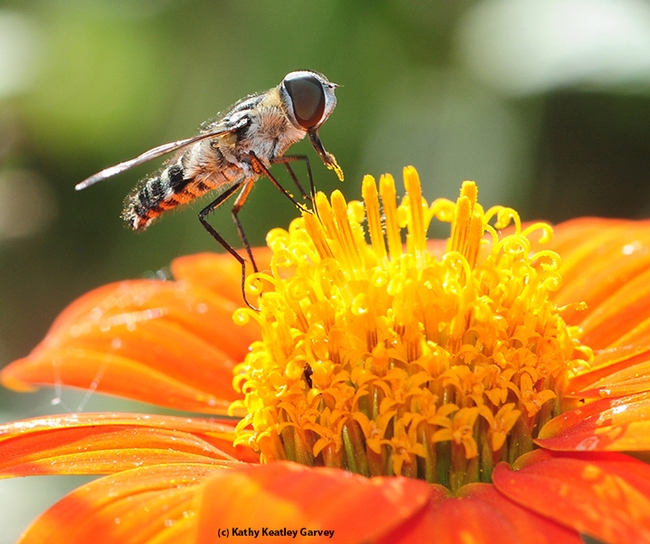
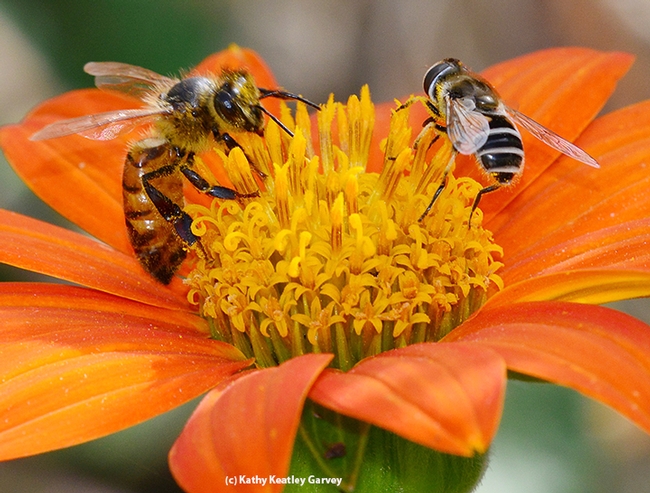
- Author: Kathy Keatley Garvey
Have you ever seen a bee fly, a member of the family Bombylidae?
It's about the size of some bees. It buzzes like a bee. But you can quickly tell it's not a bee by its behavior. It's a fast-moving, long-legged, fuzzylike critter that darts in and around flowers, grabbing nectar on the go, before buzzing off again.
It's curious little insect. Its long tongue (proboscis) is so long you're inclined to say "What? Is that for real?"
It is.
Like a fly, it has two wings (unlike bees, which have four).
We spotted this one pollinating the flowers behind the Lab Sciences Building at the University of California, Davis. The adults feed on nectar and pollen.
In their larval stage, bee flies parasitize the eggs and larvae of ground-nesting bees, beetles and wasps.
Says Wikipedia: "Although insect parasitoids usually are fairly host-specific, often highly host-specific, some Bombyliidae are opportunistic and will attack a variety of hosts."
Biologist Beatriz Moisset, in writing a "Pollinator of the Month" piece for the U.S. Forest Service in celebration of wildflowers, called it "A Pollinator with a Bad Reputation." She also blogs about Pollinators.
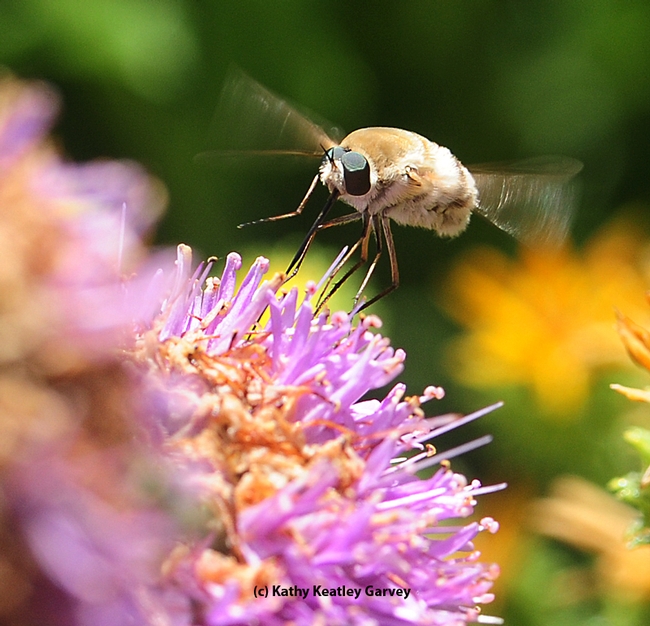

- Author: Kathy Keatley Garvey
There are "bees" and there are "flies."
And then there are "bee flies."
Bee flies? They're so named because they look somewhat like bees. Order: Diptera. Family: Bombyliidae.
We spotted a single bee fly, as identified by UC Davis forensic entomologist Bob Kimsey, foraging on our sedum yesterday. Like a bee, it's a pollinator; the adult bee fly feeds on nectar and pollen. Entomologists estimate there are some 4500 described species of bee flies throughout the world, varying in size from 4 to 40mm.
In the larval stages, they are parasitoids; the adult bee fly lays her eggs in the nests of wasps, beetles or solitary bees. Then the larvae ungraciously thank their hosts by eating them.
This large bee fly (below) apparently found the nectar to its liking. It lumbered from flower to flower sipping nectar.
The honey bees, hover flies and leafcutter bees all scrambled to avoid a collision.

